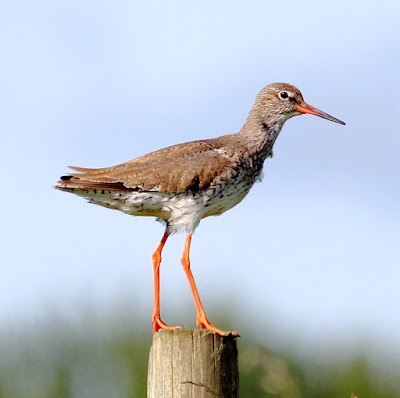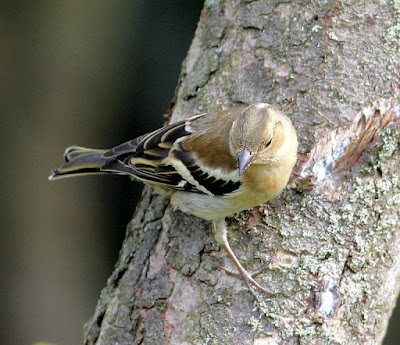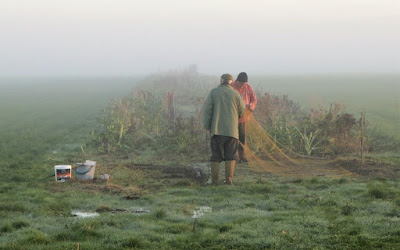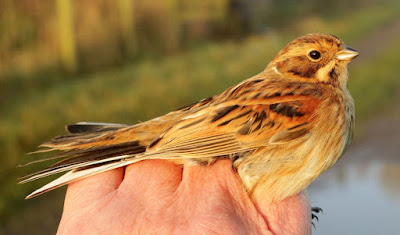Friday, November 25, 2022
Another Drowned Rat
This is a short post because there's not much news. And once again the culprit is the lack of decent weather in which to get outdoors for serious birding.
Let’s start with a request to regular readers to take a look at a recent photographic competition. The same readers will know that The Forest of Bowland features occasionally in Another Bird Blog.
“Hi Phil”
“Many congratulations, your image 'Redshank' has been shortlisted in the Forest of Bowland photo competition. The prize allocation will be decided by the public and voting will run from Monday 28th November to Monday 12th December, so please feel free to share the web link (from Monday) with friends and family, we will also promote voting via social media.”
Hetty Byrne
Sustainable Tourism Officer
Here’s the photo and you know what to do folks. If by any chance I win a prize I’m afraid that Sue has bagged the other place for the weekend trip but if I win a hamper of Bowland Delights I will relate the gustatory sensations.
Redshank
Like the rest of the preceding days, Friday morning was wet & windy when I drove to Pilling to drop supplementary seed at our ringing site.
On the last visit here it looked as thought the regular pair of Stonechats had left. But no, today there they were again near one of their hangouts, a line of fenceposts 50 yards from where I looked. Although they stick like glue to each other it is very difficult if not impossible to get two in the viewfinder at once. It’s inevitable that with Stonechats the more striking males become the centre of attention to someone with a camera. In contrast, the less conspicuous female has a major advantage during the breeding season.
Stonechat
There was some commotion around the area of the pool with complaining crows and I immediately thought there was a raptor nearby. All I saw was a Grey Heron, a bird that crows don’t much like but one they will tolerate.
As I fed the whoosh net area there came a sudden and heavy shower from grey clouds above. I was in danger of becoming a drowned rat for the umpteenth time this last week or two. I took refuge in the car and wound the window partly down so as to watch another net ride that we scatter with seed.
After a while the usual species appeared – Blackbirds, Chaffinches, Greenfinches, Reed Buntings, a Robin or two and a chattering Wren. And a Brown Rat slinking through the slippery grass towards the new seed - so that’s where much of the seed is going.
Brown Rat
"Rats are found in nearly all areas of Earth which are inhabited by human beings. The only rat-free continent is Antarctica”.
And then I saw the reason for the earlier hoo-hah, a Sparrowhawk. It dropped from the trees to ground level and flew along the hedgerow to then swoop up and sit in a tree. Here it became less obvious to the naked eye of any passer by but in a handy spot for a fly by of the feeding station or a dash at passing birds.
Sparrowhawk
That’s all for now folks. Keep watching the weather forecasts and stay out of the rain.
Linking this weekend to Eileen's Saturday Blog and Anni in Texas.
Saturday, November 19, 2022
Sticky Times
The forecasts for Wednesday proved to be on the wrong side of marginal. Luckily I’d already decided to drive and top up the feeding station without taking the ringing gear.
The Fiat splashed through deep puddles of the days and weeks before as I looked for a less sticky spot to park up and disembark.
I’d made a good decision as the wind was a tad strong for any netting and this would be a day for dropping a bucketful of supplementary seed and a quick look around.
A Cetti’s Warbler greeted me with a burst of rapid-fire song as if it was trying to attract attention but I didn’t even look from where the song came because I knew the chances of seeing the bird were close to zero. And anyway, a few seconds later it would be gone and singing fifty yards away.
Fifteen and more visits to Spain’s Balearic Islands where the Cetti’s is both common and widespread taught me not to waste time in trying to actually see a Cetti’s but to instead enjoy its song and eccentric behaviour. While morning and evening can be best, the colour, size and the habitat a Cetti’s chooses makes for challenging birding.
It’s no different here in the UK where hardly anyone sees the skulking, evasive Cetti’s Warbler, a little bird with one of the UK’s loudest and most distinctive songs. It’s thought that by hiding away and singing loudly and forcefully from different parts of its territory, a Cetti's can fool rivals into thinking there are several males present, making the interlopers less likely to stick around. This behaviour allows a male to then have two or three females in his territory and thereby increase the success of his own lineage.
Chaffinches, Reed Buntings, Long-tailed Tits and Greenfinches criss-crossed the net ride in search of the scattered seed. I watched for a while and then dropped seed on the whoosh netting square where the cleared and flattened ground held puddles formed by the days and weeks of rain. A couple of days of wind and sun would dry the square - if only.
Long-tailed Tit
Reed Bunting
Chaffinch
It was Saturday before the wind and rain presented a real window of opportunity by way of a 5mph wind or less across a number of forecasts. It was time to have another go. I met up with Andy and Will at 0700 where the partly flooded farm track glinted in our combined headlights. There was mist which hung around until the sun burnt it off around 10am.
With a little drainage work we made the whoosh net area usable if a little muddy, dropped more seed, set the single panel net to one side of the flooded walkway and erected three nets in the woodland edge.
The morning began, the mist refused to clear, but eventually it did and the catch improved a little. We finished at 1130 with a nice and varied catch of 25 birds - 7 Chaffinch, 5 Linnet, 4 Meadow Pipit, 3 Redwing, 2 Reed Bunting, 1 Greenfinch, 1 Wren, 1 Robin, 1 Blackbird.
Meadow Pipit
Reed Bunting
Greenfinch
Linnet
Redwing
Redwing
Today was one of the better Chaffinch days, yet another farmland
species that is seeing a serious decline in its population. One of the males
today, with a wing length of 95mm, was possibly of Northern European origin, a
type we are seeing less of in recent years. Our UK Chaffinches are generally smaller,
both males and females.
Chaffinch
A good morning was had by all and we'll be back another day on Another Bird Blog.
Linking today to Eileen's Blogspot and Anni in Texas
Saturday, November 12, 2022
Picking The Best
Saturday morning was going to be the best of a bad bunch of yet another week of rain blown in from the Irish Sea and the Atlantic Ocean. Off the south westerly sea currents, air temperatures have been unseasonably but not uniquely warm; but that’s no use if we’re unable to get out ringing.
During the week Will volunteered for the supplementary feeding and had a good spot count of 70 or so Linnets, a couple of Reed Bunting, Chaffinch and Greenfinch. He saw again the Marsh Harrier that we think may have taken up temporary residence while the weather is so mild. He also saw a single Swallow, again, not unprecedented in wet and warm late autumns.
With Andy in Pisa for Pizza the team today was me and Will for the 0630 meet at the farm.
The breeze was too strong across the seed plot for catching Linnets so we stuck to a couple of nets in the sheltered spots.
Although we knew we wouldn’t catch many birds it was just good to get out in the fresh air after being stuck indoors so much - 13 birds - 5 Reed Bunting, 2 Wren, 2 Great Tit, 2 Chaffinch, 1 Redwing and 1 Blackbird.
The Redwing was caught early morning as was the Blackbird, the latter an example of a ‘continental’ first year male with streaky throat, scalloped breast & belly with all dark bill. Both species were in evidence for the first hour or so with maybe 15/20 Redwings and a dozen or so Blackbirds plus a single Song Thrush on the move.
Redwing
Blackbird
Our supplementary seed drops are now definitely bringing more Chaffinches and Reed Buntings. Our count this morning being 15/20 Reef Buntings (5 new caught) and 15/20 Chaffinches (2 new caught).
Chaffinch
Reed Bunting
A pair of Stonechats has been in residence for weeks now as they both range across a defined territory, all the while sticking like glue, one to the other. They might well stay throughout the winter but the more likely scenario is that after a couple of days of cold frosty weather they will disappear when their preferred insect food becomes hard to source.
Other birds seen/heard - one large female Sparrowhawk, 1 Kestrel, 1 Cetti’s Warbler, 15/20 Meadow Pipit, 60 Linnet, 12 Skylark, 2 Greenfinch.
The breeze picked up to turn our nets into wind socks. We called it a day at 1030 but we’ll be back.
Linking today to Anni in Texas and Eileen's Saturday Blog.
Saturday, November 5, 2022
A Mixed Bag
We took advantage of Friday's clear but frosty morning with a six-thirty start to the ringing session. Will arrived on site at Pilling from an easterly direction and was lucky enough to see a Barn Owl cross the road in front of his car. By then Andy and I who arrived from the opposite direction were halfway down the access road and missed seeing the owl in our haste to get the nets going.
It was a shock to the system to discover that a number of the guy ropes we leave on for early speed were solid with a layer of ice. For the first time this autumn/winter we needed gloves to hand.
More than 20 Little Egrets left the tree roost when the car lights disturbed their sleep and we heard Redwings flying over. We didn’t catch Redwings or Little Egrets and at first it seemed that there weren’t too many birds around in the minus temperatures.
Things improved as intermittent sun arrived to give us a mixed bag of 21 birds of 8 species - 9 Greenfinch, 3 Linnet, 2 Reed Bunting, 2 Goldcrest, 2 Wren, 1 Chaffinch, 1 Blue Tit and 1 Cetti’s Warbler.
One of the first birds out was our second Cetti’s Warbler at this site, this latest a male, following the tiny female we caught on October 4th.
Males are larger than females and some can hold large territories with up to three females. Consequently, the UK population of around 3500 territories is now judged on the number of singing males present rather than “pairs” with the population as a whole thought to be resident rather than migratory.
The early morning sun enhanced the red/brown tints of the Cetti’s plumage.
Cetti's Warbler
Although the number of Linnets around was not huge today (70/90 birds) we caught a couple of obvious Scottish types. The first winter female below was especially striking through the dark mantle and its dusky and heavily streaked breast feathers, quite unlike the softer tones of local Linnets.
At last there seems to be Reed Buntings around and of the seven or eight we saw, two new ones was an improvement on recent numbers. We think that our provision of winter supplementary food for all will see more Reed Buntings in the weeks to come.
The Reed Bunting is one of the species that suffers from the "winter hunger gap". This is the time of year when winter is at its harshest and natural food like seeds, berries and insects are scarce or unavailable to farmland birds. Typically, it lasts from December until March.
This date in November might be a little late for migratory Goldcrests. It’s a species that is in short supply through the winter months where overnight frosts can quickly kill off a tiny bird that weighs less than six grams.
Perhaps these late Goldcrests are ones from northern Europe, like the similarly sized Pallas’s Leaf Warbler seen on Thursday just across the water in Fleetwood’s Mount Park? The Pallas’s had travelled over 3,000 miles from the mountain forests of southern Siberia, east to northern Mongolia and China.
Other birds seen today - Buzzard, Sparrowhawk, 2 Stonechat. Fifteen or twenty Meadow Pipits and several Skylarks.
The weekend beckons. Back soon with more news, views and photos on Another Bird Blog.
Linking this weekend to Eileen's Blogspot and Anni in Texas.
Thursday, November 3, 2022
Tweedledee And Tweedledum
It was just as we thought. Tweedledee and Tweedledum the two young Greeenfinch we caught last week at Pilling were on a lad’s day out in South Morecambe Bay. Their real titles were of course TY58186 and TY58188 because as we all know, in the twenty first century, everyone and everything is just a number.
Tweedledee
Tweedledum
In the shadow of Heysham Nuclear Power Station the lads and lasses of North Lancashire Ringing Group ringed TY58186 on the 27 September and then followed this up with TY58188 on 29 September. The two youngsters later ganged up in search of a good time with tasty food and something to drink than headed our way, only to blunder into more ringers’ mist nets on 18 October.
The journey from Heysham to Pilling around Morecambe Bay has many watering holes and eateries on the edge of the saltmarsh in which to take on supplies. The route is a regular one, with similar records for a number of species, including Chaffinch, Reed Bunting, Reed Warbler, Sedge Warbler, Lesser Redpoll and Cetti’s Warbler. If there were bird ringers in the coastal communities of Sunderland, Glasson or Thurnham they would for sure catch the very same birds that we do.
Morecambe Bay
There is no rivalry between our respective ringing groups. In fact the overnight lighting, warm waters and balmy air created by the Heysham nuclear power station is a magnet for large numbers of migratory birds, often rare ones, species we hardly ever see, never mind catch.
The major advantage of ringing at Heysham Power Station is that when setting mist nets in the dark for overnight arrivals, the ringers have no need to use a Petzl head torch. The radioactive glow from the ringers themselves is sufficient to light up their mist net rides thus saving money in buying batteries, the manufacture of which contributes to global warming and the eventual catastrophe.
We have no such luck in the dark, cold nights of Pilling where even now and just like the famous Pilling Potatoes, the Over Wyre folk are left in the dark about most things and to simply dream of life in the big wide world.
It was a glorious day in 1993 when the ramshackle Bridge Over The River Wyre gave way to one of steel and concrete to allow incomers from Blackpool, Poulton le Fylde and beyond to export civilisation. They brought with them all the essential things of the modern world – twitchers, motor cycle racing, pizza joints, litter, anti-social behaviour and traffic jams; very often all on the same day.
Since then things have never been quite the same in Wonderland.
Well, what do you know? The weather may relent overnight tonight and present us with a window of weather fit for ringing, the first for ten days.
Stay tuned to Another Bird Blog. You know it makes sense.
Labels:
Another Bird Blog,
Bird Ringing,
Greenfinch,
Heysham,
Over Wyre
Saturday, October 29, 2022
An Interesting Redpoll - Well Aren’t They All?
There’s no birding or bird ringing for a day or two with both rain and wind preventing activities.
However, there came an interesting if slightly puzzling recovery of Lesser Redpoll AJD6136.
We caught and ringed redpoll AJD6136 at Oakenclough on the morning of 1st October 2018. The morning produced a catch of 6 Lesser Redpolls, 4 Goldfinch, singles of Chaffinch and Meadow Pipit, plus a couple of Great and Blue titmice; a typical if not over large mix of early October local and migrant species.
At this time of year many Lesser Redpolls from Northern England and Scotland are on their way south to winter in France and the hotspot of Belgium, the latter a country with a special attraction to the species. A Belgian winter landscape holds a redpoll's preferred seeds in abundance and the ambient temperatures are certainly preferable to those of Scotland.
Lesser Redpoll from BTO Migration Atlas
“Most recovery data of Lesser Redpolls comes via North and North West European ringing regions. Most populations follow on average a North to South or North West to West/South East axis, with recoveries as far as N Kazakhstan, up to China. There are two recoveries at more than 4000 km, mostly less than 2000 km.” BTO.
Only this week did we learn that the same Lesser Redpoll AJD6136 was recaptured by Belgian ringers 44 days later at Maubray, Hainaut, Belgium on 18th October 2018. Yes, that’s right; it took four years for the information to reach us that AJD6136 was recaptured in the centre of the Belgium hotspot pictured above.
A likely but only partial explanation for the four year delay is that the Belgian end of the recovery noted the ring as AJO6136 rather than AJD6136, transposing the letter “D” as “O”.
This simple error would cause confusion plus double checking and detective work in both the BTO UK and Bruxelles, Belgium end of operations with an exchange of emails and phone calls until the true number could be confirmed. The number AJO6136, if it existed and in circulation, would probably refer to a different species, perhaps one that was highly unlikely to be found in Belgium in the month of November.
All’s well that ends well but the lesson is that once a ringed migratory bird is released it is unlikely to be caught again so the utmost care should be taken with ring numbers and sequences that are not recognised.
Our own procedure, after first identifying the species and realising that the bird has an unfamiliar ring, is that the ring number, letters, plus country code if applicable, are read and double checked by two people. One can never be quite sure where that bird was ringed!
European Bee-eater
I just double checked the weather forecasts for the week ahead again. It’s not good news for anyone who likes to be out and about.
Keep watching for a window of opportunity and news, views and photographs here on Another Bird Blog.
Labels:
Another Bird Blog,
Bird Migration,
Bird Ringing,
Brussels,
BTO,
Lesser Redpoll,
Scotland
Tuesday, October 25, 2022
Another Week Goes By
The week ahead didn’t promise much in the way of weather suitable for ringing birds. Tuesday looked the best possibility, a brief lull in the showery westerlies at best. Once again the Internet and TV weather forecasts became compulsive viewing, and far better than the BBC's "News".
It was touch and go until 0700 when I met up with Will and Andy at the ringing site to zero rain and a touch of breeze that spelt "just about".
It quickly became apparent that the plan to catch more Linnets would be thwarted by the now stiff breeze that scurried across the seed plot. However, other slightly sheltered nets, plus the standalone whoosh net might produce a bird or two.
Early sounds of Redwings and Blackbirds were followed by a good mix of 24 birds caught - 12 Greenfinch, 6 Meadow Pipit, 2 Chaffinch, 1 Blackbird, 1 Redwing, 1 Wren, 1 Dunnock, 1 Goldfinch.
Greenfinch
Meadow Pipit
Goldfinch
Just yesterday we received news of Meadow Pipit ALP8836 ringed here on 9 September 2022. Sixteen days later on 25 September the same bird was caught by another ringer at Buckfastleigh, Devon.
A glance at the map below will show that the pipit had travelled virtually due south (190 degrees) and was probably on its way across the English Channel, on to France and eventual destination North Africa, the wintering haunt of many British Meadow Pipits.
Pilling to Buckfastleigh, Devon
Birding provided more interest in the shapes and sounds of 70 or more Linnets that we couldn't catch, more Greenfinches, Meadow Pipits, Skylarks and a Great-spotted Woodpecker. Two Stonechats played hide and seek in amongst the seed plot while the now resident Cetti's Warbler seems to have regular spots where it breaks into song.
It may have been the Marsh Harrier we saw or more likely, a dashing and unseen Peregrine that set many hundreds of Lapwing, Golden Plovers, Starlings and Black-headed Gulls into a melee of wings and sounds overhead and looking for safety to the west.
Nothing much bothers the Little Egrets or the lonesome Grey Herons, they seem to have all the time in the world to continue their stalking through the water courses in search of a meal.
Grey Heron
Well, what do you know? The weather forecasts say nothing until weekend at least. Another week goes by but we don't give in that easily.
Stay tuned to Another Bird Blog for news, views and photos, local or otherwise.
Linking this weekend to Eileen's Saturday Blog and Birding in Texas.
Subscribe to:
Comments (Atom)



























.JPG)

























.jpg)












